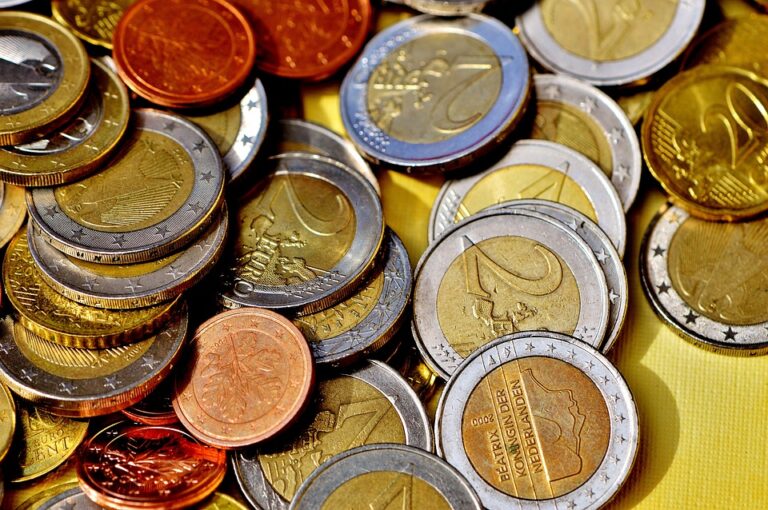Last updated Aug. 1, 2024 by Okechukwu Nkemdirim
The United States has experienced an unusual scarcity of coins over the past few years, an issue that puzzled many consumers and businesses alike. In an age when digital transactions are becoming predominant, the scarcity of physical currency, particularly coins, becomes even more intriguing. This article delves into the causes behind this coin conundrum, its impact on everyday life, and the possible solutions to address the coin shortage.
The Roots of the Coin Shortage
The COVID-19 pandemic played a significant role in creating the initial coin shortage. With many businesses shuttered and consumers avoiding in-person shopping, coin circulation practically came to a halt. Normal transactional venues like laundromats, vending machines, and retail shops that often function as hubs for coin circulation experienced drastic reductions in use.
Moreover, the U.S. Mint, which produces coins, faced operational interruptions. In an effort to protect its workers, the Mint reduced its staffing and working hours, significantly decreasing the production of new coins. This absence of new coins flowing into the system, combined with a sharp drop in circulation, created a perfect storm for scarcity.
Economic and Behavioral Patterns
The shortage of coins is not solely a supply issue but also amplified by changing consumer behaviors. Over the years, there has been a steady increase in the usage of digital payment methods such as credit cards, debit cards, and mobile wallets. The pandemic accelerated this trend, with substantial growth in online shopping and touchless payment methods due to health and safety concerns. Businesses, too, have adapted to this digital shift, some even refusing cash payments altogether to minimize contact.
However, a considerable segment of the population still relies on cash transactions. This includes low-income households, elderly individuals, and those without easy access to digital payment systems. Thus, the coin shortage disproportionately affects these vulnerable groups, exacerbating existing social inequalities.
Impact on Consumers and Businesses
Everyday Transactions
For consumers, the coin shortage manifests in various inconvenient ways. Everyday activities, such as doing laundry or paying for parking, become more challenging without access to coins. Some consumers report difficulties in transactions at farmers’ markets, yard sales, and small independently owned grocery stores that often don’t accept cards and prefer coins for exact change.
Businesses and Operations
Businesses also face significant hurdles due to the lack of coins. Retailers, particularly those in smaller operations, find it difficult to make change for cash transactions. They are sometimes forced to round off prices or request card payments-only, potentially alienating customers who prefer or need to use cash. Supermarkets and convenience stores grapple with shortages by posting notices requesting exact change or suggesting customers use cards instead.
Employee payrolls featuring tips, such as those in restaurants and bars, experience delays or complications in distributing gratuities in cash. Even public transportation systems, which often rely on coins for ticket machines and fare collection, have had to adapt by either encouraging digital ticketing or facing disruptions in service.
The Federal Reserve and the U.S. Mint Response
Recognizing the severity of the coin shortage, the Federal Reserve established the U.S. Coin Task Force in mid-2020. The task force consists of federal entities, armored carriers, banks, retailers, and coin aggregators collaborating to identify and implement solutions to ease the shortage. One such initiative is the "Get Coin Moving" campaign, encouraging consumers to spend their coins or deposit them at financial institutions.
The U.S. Mint has also ramped up coin production to historic levels, producing more coins in 2021 than at any time in the last several decades. In addition, the Mint is operating at full capacity and implementing safety measures to ensure that staff can work safely without interruptions.
Technological Innovations and Long-term Solutions
Promoting Digital Payments
The sustained push towards digital transactions is one clear pathway for mitigating coin shortages in the long term. Expanding financial inclusion by providing easier access to digital banking and payment options can reduce reliance on physical currency. Government and private-sector initiatives offering incentives for cashless transactions and educating consumers about digital finance will play vital roles in this transition.
Coin Recycling Programs
Encouraging coin recycling is another efficient way to alleviate the shortage. Retailers offering incentives, such as discounts or small rewards for returning coins, can recirculate coins back into the system. Improved coin collection mechanisms at banks and coin machines at supermarkets, which offer options to convert coins to cash or donations, also support higher recirculation rates.
✓ Short Answer
The coin shortage, exacerbated by the COVID-19 pandemic, is driven by disrupted production and reduced circulation, impacting consumers and businesses reliant on cash transactions. Digital payment systems and coin recycling programs are viable solutions.
Enhancing Mint Operations
Investing in the modernization of the U.S. Mint’s operations and equipment is essential in ensuring a stable future supply of coins. Efficient production processes, enhanced by technology and data analytics, can provide a steady stream of coins, preventing future shortages. Additionally, strategic distribution based on regional demands can optimize coin allocation across the country.
Public Awareness and Education
Raising public awareness about the coin shortage and encouraging responsible behavior play crucial roles in addressing this issue. Educational campaigns highlighting the importance of keeping coins in circulation and offering practical steps for the public, such as regularly using or depositing coins, can foster a community-driven approach to resolving the shortage.
FAQs: Understanding the Coin Shortage
Q1: What caused the current coin shortage?
A1: The primary causes are reduced coin production due to COVID-19 safety measures and a dramatic fall in daily business transactions that facilitate coin circulation.
Q2: Why can’t the U.S. Mint simply produce more coins to resolve the shortage?
A2: While the U.S. Mint has increased production, the problem also lies in coins not being recirculated properly. Enabling the flow of existing coins back into everyday transactions is equally important.
Q3: How does the coin shortage affect me as a consumer?
A3: It can create inconveniences in daily cash transactions, such as paying for parking, using vending machines, and shopping at cash-preferred businesses.
Q4: Are there steps I can take to help mitigate the coin shortage?
A4: Yes! You can spend your coins, deposit them at banks, or use coin machines at supermarkets that recirculate currency.
Q5: How long is the coin shortage expected to last?
A5: The duration depends on how quickly coins can be recirculated and the ongoing adaptation to digital payments. Efforts by both the U.S. Mint and the Federal Reserve aim to normalize the situation as soon as possible.
Q6: Are there any long-term solutions to prevent future coin shortages?
A6: Long-term solutions include promoting digital payment methods, enhancing coin recycling initiatives, and modernizing Mint operations to ensure steady and responsive coin production.
Q7: How does the Federal Reserve’s U.S. Coin Task Force operate?
A7: The task force comprises various stakeholders that collaborate to develop and implement strategies to reestablish efficient coin circulation, including public campaigns and improving distribution systems.
Q8: What role do businesses play in alleviating the coin shortage?
A8: Businesses can incentivize coin usage and recycling by offering discounts or rewards for customers paying with exact change or depositing coins.
The coin shortage has highlighted the complexity of managing a physical currency system in an increasingly digital world and underscored the need for adaptive and innovative solutions to ensure financial inclusivity for all segments of the population.




